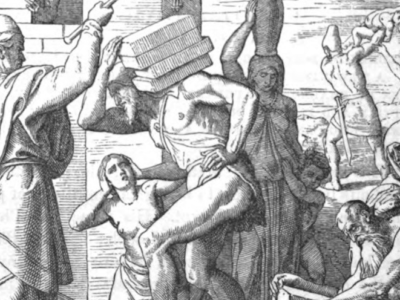By Daniel Bortz —
“When the (Hebrew) month of Adar begins, we should increase in joy” —Taanit 29a
With the joyous holiday of Purim happening this month, there is great reason to rejoice. But what is so unique about the holiday of Purim that we celebrate to such an extent, 2,400 years later? Our sages teach that Purim and its message is so great that the holy day of Yom Kippur or Yom Hakippurim really means “A day like Purim.”
We learn about the events of Purim from Megillat Esther, the scroll of Queen Esther. Incredibly, this is the only one of the 24 books of the Tanakh where G-d’s name is absent. The events in Persia seem to unfold quite naturally. Sure, everything works out in the end, amazingly, for the Jewish people. At every turn the plans of their arch-nemesis Haman are thwarted. But it makes practical sense, since the Jewish people had Esther in the palace to pull some political strings; not to mention the influential Mordechai at the gates of the palace. Maybe it was just a case of being at the right place, at the right time?
This is the exact theme and message of Purim. Our lives today also seem to flow naturally without any outside influence. There is no consistent, open divine display of influence; His name isn’t mentioned in our lives. Throughout the good and bad times, it is up to us to recognize the puppeteer pulling the strings, the conductor behind the orchestra. Megillah is etymologically connected to the word Megaleh—“to reveal,” while the Talmud states that Esther’s name is connected to Hester—“hiddenness.” The theme of Purim is that of working to reveal what is hidden.
Now we can begin to understand the deeper significance behind the custom of dressing up on Purim, hiding the face, and why we eat hamantaschen, a cookie that hides its sweet filling inside. When one wears a mask, that person’s identity is hidden. But if someone recognizes him and calls out his name, he has no need to wear the mask anymore, the game’s up! G-d’s face—His presence—is hidden behind the mask that is our world. If we recognize the world as merely a well-fitted costume with each aspect of nature as a purposeful disguise of inner expression, then he who hides begins to reveal his identity.
Even in bad times, with events that we can’t understand in our limited worldview, this too has a sweet reason hidden behind it, just like the hamantaschen whose inner sweetness isn’t always apparent from the outside. Haman professed that life was ruled by luck and chance. The name of the holiday Purim comes from the pur or “raffle” that Haman made to decide the date of the Jewish people’s destruction. He believed that life was a roll of the dice. In the end, Haman was hung on the very gallows he created for Mordechai.
And this is why we are so joyful on Purim. When an improbable outcome occurs, especially in an extremely improbable way, laughter is generated. The more extreme the reversal, the greater the joy.
Purim teaches us that nature is anything but natural. It doesn’t have to take a sea splitting for us to notice the constant miracles woven together that make up the history of the world, and our own life stories. Your life is a Megillah, every event has been purposefully designed just for you, to help lead you to your successful destination.
Wishing you a happy Purim!
Rabbi Daniel Bortz is the director of JTeen San Diego, at jteensd.com. For information on classes, contact him at danielbortz@gmail.com.









Comments